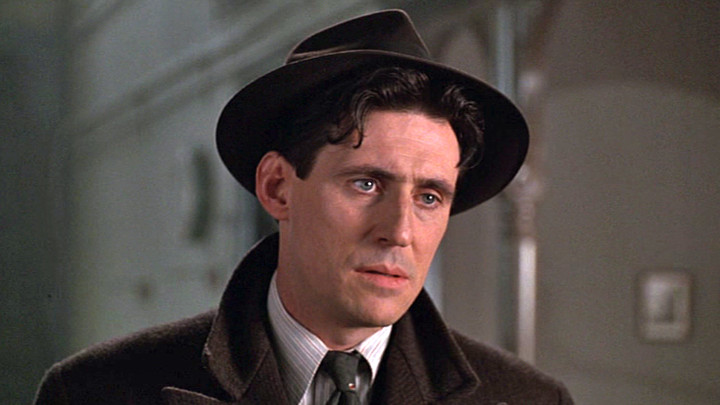
What is it about gangster movies that we find so cool? If you were to read of most of the crimes that are relished on screen in the newspapers- the murder, the blackmail, the cheating, the violence- you would be appalled, so what is it that makes them so admirable when watching them on a screen? In fact, at arguably the height of the gangster films popularity in the 1930’s, with the releases of Scarface, Little Caesar and Angels with Dirty Faces, the crimes seen on screen directly mirrored reality as prohibition was still enforced across America and Al Capone reigned supreme. Real people were dying and real money stolen, yet people would still flood to the cinemas to live on the perpetrators side for a couple of hours.
There is something about the rogue individual that lives outside and above the law that appeals to our tribal side that doesn’t want to be penned in by society; that demands power and respect despite no official title. Adorned with sharp suits and sharper tongues, the best gangsters are sultry and stylish; oozing an effortless machismo and confidence.
Where there is society, there is crime. Although the quintessential image of the gangster is the snappy, wise-cracking 1930’s New York criminal, dressed in a pinstripe suit and carrying a Tommy gun, the gangster takes many different forms around the world; from Eastend Cockney gangsters to the Japanese Yakuza and Chinese Triads. However, the gangster film is never as dichotomous as “the law is good and criminals are bad” as the gangsters themselves often come from disadvantaged beginnings, climbing the ladder out of poverty into prosperity the only way that is available to them, while the policemen and politicians that are supposed to uphold the law are as corrupt and violent as the outlaws themselves.
10. Get Carter (1971, Mike Hodges)
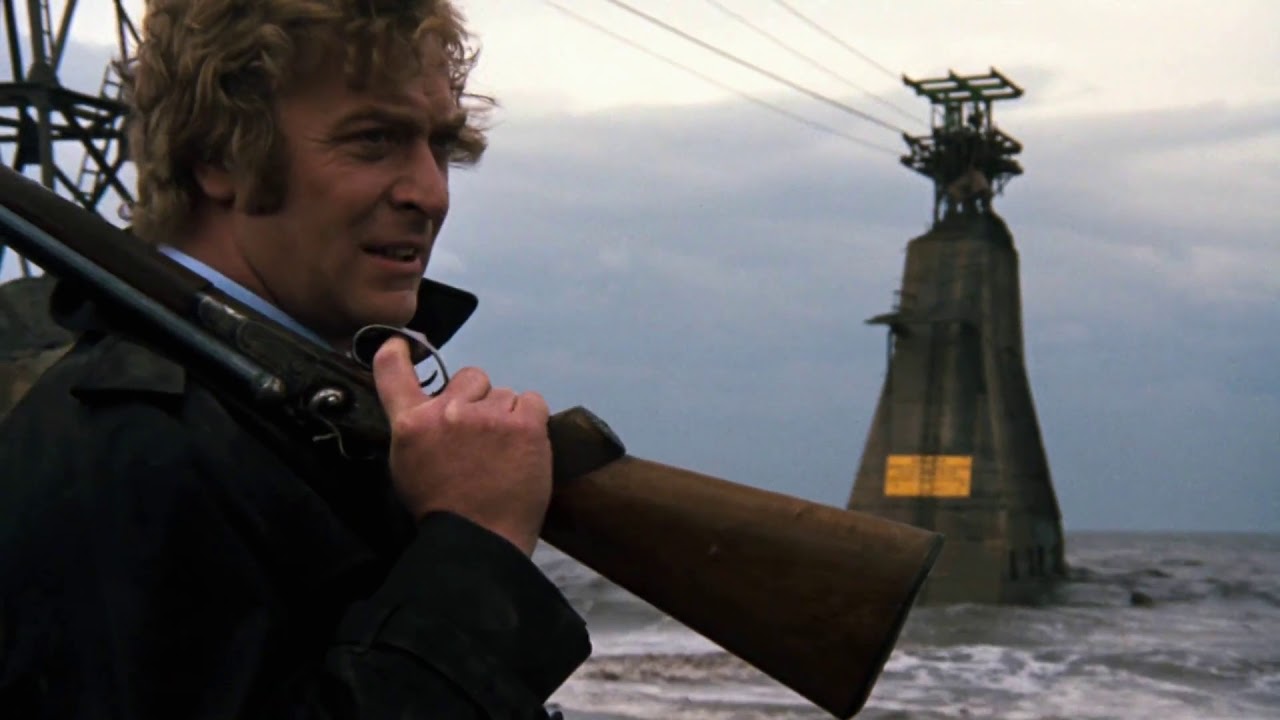
Mass popularity for the gangster genre arrived comparatively late to British cinema than it did in America; however, when it did, it was similarly derived from its relation to real events. Sparked by the increased notoriety of Eastend gangster twins Ronnie and Reggie Kray in the 1950’s and 60’s, the Cockney gangster became a figure of keen interest and fascination in British popular culture. The Kray’s had a strong influence over much of London through their organised crime syndicate “The Firm” while becoming celebrity figures of the Swinging London movement through their running of the popular Westend nightclub, Esmerelda’s Barn, where they socialised with the likes of Frank Sinatra, Peter Sellers and Shirley Bassey. Stylish and charming characters that could at any time switch into a tirade of abuse and violence, the Kray’s set a precedent for the depiction of the Eastend gangster that is still being continued to this day.
Perhaps second only to the Kray twins, Michael Caine is the iconic Cockney figure; his voice being one of the most recognisable and mimicked across the history of cinema. Caine became known for his sleek style and dry wit throughout the 60’s in films such as Alfie and The Italian Job, making it only a matter of time until he was deployed in the gangster film in 1971’s Get Carter. Caine plays the semi-eponymous Jack Carter, a small-time Eastend gangster who travels to his hometown of Newcastle to investigate the death of his brother. As he becomes increasingly convinced that his brother’s death was linked to a local crime organisation, his investigation turns into vengeance as he violently punishes those who were involved.
Michael Caine’s portrayal of Jack Carter is the dominant “cool” factor in the film. His slick suits and expensive watches completely juxtapose the gritty, industrial Tyneside location and highlights his triumph over the barrier of the class system that he was born in to. Carter deals with the gangsters that threaten him coolly and methodically as he disposes of them one by one in his quest to avenge his brother. He dominates both genders as he seduces and beds numerous women along his way like a nihilistic James Bond.
There are hints to the Swinging Sixties in Get Carter- namely in Glenda’s flat where an LP of The Rolling Stones’ “Let It Bleed” sits beside her retro modernist style bed- but mostly Get Carter adopts a more 70’s attitude to “cool” with Carter’s amorality and cynicism more in line with the likes of Dirty Harry and The Long Goodbye than anything of the fun-loving, vibrant 60’s.
9. City of God (2002, Fernando Meirelles)
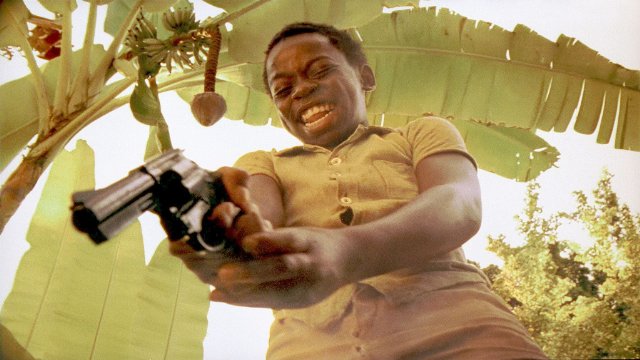
The opening to City of God burns with a Brazilian energy that sets the pace for the rest of the film. Meirelles presents life in the suburban favelas as hectic and dangerous, quickly cutting between images of knives being sharpened, food being fried and a runaway chicken being chased by a gang of armed youths, all underscored by a Brazilian drumming beat. We are then introduced to the protagonist, Rocket, who innocently gets trapped with the chicken in the middle of the road between the gang of youths and a squadron of armed police. The camera pans 360 degrees around Rocket in slow-motion as he introduces himself through voiceover. City of God has a lot of fun with form while always making its message clear: life in the City of God is like that of a chicken in line to be slaughtered, death is inevitable unless you dare to escape.
Unlike other films on this list, City of God isn’t cool because it glamorises the gangster lifestyle. In fact, it does the opposite. Its story is tragic and depressing, recounting the true story of the gang warfare that took place in Rio De Janiero throughout the 60’s and 70’s in which thousands of, mostly innocent, people were murdered and child soldiers were forced to die. However, Meirelles does a good job in making the film feel largely light and enjoyable throughout as he masters a very careful balance between the fun and the fear of life in the favelas.
Through the aforementioned directorial and editorial flair, Meirelles always makes City of God feel fresh and exciting as he blisters through Rocket’s tumultuous narrative while allowing mild tangents to become acquainted with side characters and the history of the events that occurred.
City of God is a tour de force of cool filmmaking as it thrives on style and energy in the most delightful of postmodern ways.
8. Hard Boiled (1992, John Woo)
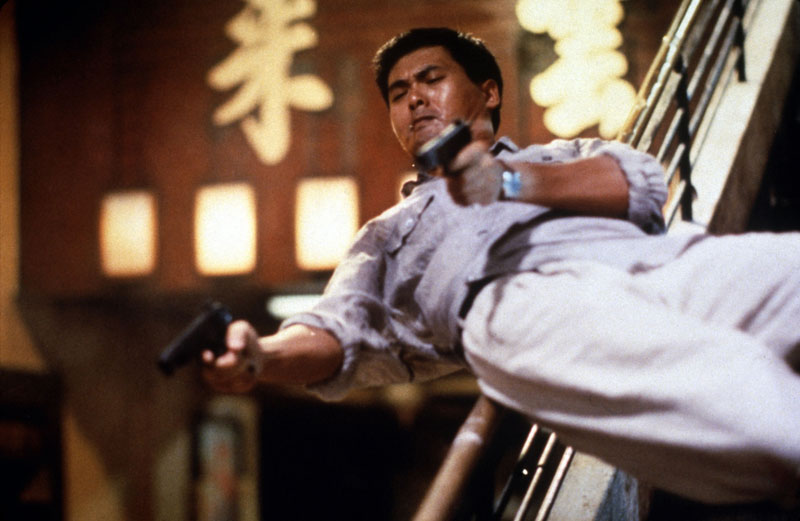
After making a succession of Hong Kong crime films in the 1980’s with A Better Tomorrow and The Killer, John Woo sealed his ticket to Hollywood in 1992 with his most celebrated film to date, Hard Boiled. Chow Yun-Fat’s Inspector Yuen, nicknamed Tequila for unexplained but definitely very cool reasons, embarks on a personal vendetta against a gang of gun smugglers after his partner is murdered in action. While recruiting the help of an undercover cop within the antagonist’s gang, Tequila is prepared to go to any means necessary to serve this mixture of revenge and justice, using the maximum amount of force and bullets possible. Hard Boiled is the only film on this list in which the audience are positioned on the side of the crime fighters rather than the gangsters; however, don’t let that fool you into thinking that our protagonists are going to be any less brutal and violent.
Hard Boiled is like a bingo card of cool action moments. Woo indulges in the stereotypes of the crime and action genre as policemen slide down the handrails of stairs and gangsters jump sideways towards cover while firing guns from both hands. It would not be surprising to discover if 90% of the films budget was spent on blank cartridges and squibs alone as there are more bullets fired in this than in Charlton Heston’s deepest dreams. In any other filmmakers hands the film could easily come across as corny but Hard Boiled retains its intended adrenaline and excitement through Woo’s unashamed direction and Yun-Fat’s committed performance.
Hard Boiled is most famed for its final third in which the police and gangsters battle it out in a city hospital. Woo throws all of the stakes at the audience as new-born babies and vulnerable patients are thrust into a tornado of violence. Infants are swaddled in bullet proof vests to protect them from what is literally a baptism of fire. Hard Boiled sustains its intensity and inconceivable violence for the entire final third of the movie, culminating in an expectedly, but still exhilaratingly, explosive fashion.
Although John Woo’s Hollywood career may not have panned out as successfully as expected, we can all still rejoice in the mayhem of his Hong Kong thrillers.
7. Miller’s Crossing (1991, Joel and Ethan Coen)
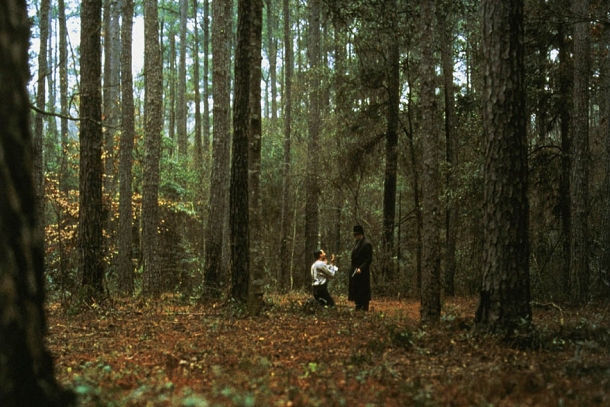
Somewhat unsurprisingly, when the punchiest dialogue writers in Hollywood took a crack at the punchiest genre of cinema, it produced one of the funniest and slickest gangster films of all time. The third film from writing and directing duo Joel and Ethan Coen, Miller’s Crossing is the story of two conflicting crime bosses in prohibition-era America. Tom Reagan (Gabriel Byrne), the right-hand man of the dominant crime boss Leo (Albert Finney), tries to keep the peace between the two warring factions. However, after Leo finds out that Tom has been having an affair with his girlfriend, Verna (played by Marcia Gay Harden in quite arguably her best ever performance), Tom is cast out by Leo and becomes divided between the troubles that are ensuing around him. With even more intricacies and events than can be described here, Miller’s Crossing is a perfectly planned and executed postmodern take on the classic gangster/noir genre.
Almost every character in Miller’s Crossing brings vivacity to the screen. From the hot-headed rival mob boss Johnny Caspar (Jon Polito) to the scheming Bernie (John Turturro) that is the cause of all of the mayhem and from the anxious, fast-talking Mink (Steve Buscemi) to the stern, no-nonsense Eddie Dane (J.E. Freeman), every character brings something different. Byrne as Tom seems to be the only unheightened character as our straight-man protagonist. His calmness and wit stand out among the others as he is able to negotiate himself out of any situation and tactfully mocks gangsters with classic “Wiseguy” lines. He uses his brain in a world where people immediately jump to use their brawn.
However, Miller’s Crossing is not just a clever take on the gangster genre, containing enough violence to hold itself against the toughest of mobster movies. In the most classically cool scene of the movie, Leo defends himself against a crew of assailants sent by Caspar to dispose of him. It is impossible to not be in awe of the robed Albert Finney strolling down a street firing a Tommy Gun as his mansion burns behind him.
Foreshadowing the likes of their award-winning later films, Fargo and No Country for Old Men, the Coen Brothers prove in Miller’s Crossing that they are able to competently balance a clever sense of humour with shocking brutality to create a style that is so distinctly their own. No matter what genre you are watching, you always know when you are watching a Coen Brothers film. Don’t give this film the high-hat.
6. Drive (2010, Nicolas Winding Refn)

It now almost seems cliché to think that Nicolas Winding Refn films are cool. Simultaneously heralded and mocked as a “filmbro” filmmaker because of the dedicated following he has from adolescent, male cinephiles, Winding Refn’s films have become a modern stereotype of stylish cinema, featuring gorgeous actors drenched in neon lighting powered by an electronic score. Although his later films may justifiably be accused of style over substance, it is not true with his 2010 picture Drive. Featuring Winding Refn’s first collaboration with Ryan Gosling, Drive details the story of a nameless movie stunt driver who doubles as a getaway driver for bank robbers. After he takes on a job to help the husband of his next-door neighbour that he has befriended while the husband was incarcerated, the driver gets sucked into a spiral of violence as the job transpires to not be as simple as it first seemed.
Ryan Gosling’s Driver is the epitome of the cool leading man. There is something so effortlessly cool and masculine about being good at driving and the Driver is the best in the business. He never speaks too much but emits an air of confidence to show that this introversion is by choice and not anxiety. Whether he is in a high-speed police chase or confronting hardened criminals, he appears completely unflappable and unfazed. Although he is technically an outlaw, you always get the impression that his morals are in the right place as he protects and looks out for those that he cares about above himself. He is the modern iteration of the Man with No Name with a car instead of a horse. Cloaked in a now iconic scorpion jacket, he is as striking and deadly as his attire suggests. Meanwhile, Albert Brooks is magnificently cast against type as the mob boss, Bernie Rose, as his ruthlessness conflicts with the innate amicability of Brooks’ nature.
A modern classic of crime cinema, Drive is sure to be watched with reverence far into the future.